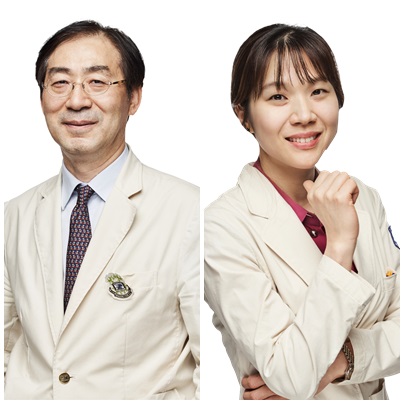Researchers at St. Mary’s Hospital have developed a test method that uses a drop of saliva to diagnose Sjögren's syndrome, the hospital said Tuesday.

Sjögren's syndrome occurs more often in women than in men and is more common in middle-aged women in their 40s. About one-third of patients suffer from systemic symptoms such as lymphoma, arthritis, Raynaud's phenomenon, liver damage, bronchitis, pulmonary fibrosis, glomerulonephritis, and vasculitis, mouth irritation and dry eye syndrome.
Patients that suffer from the disease also have five to 10 times higher chances of suffering from lymphoma complications than that of healthy patients, and it also can cause premature death due to pulmonary fibrosis complication.
Unfortunately, as of now, there are no cures to improve the natural course of Sjögren's syndrome, the hospital said.
The team, led by Professors Park Sung-hwan and Lee Ju-hwa at the hospital, conducted a genomic study of Sjogren's syndrome blood samples to investigate whether they could utilize the increased expression of Siglec-5 protein as a biomarker for the disease.
As a result, the concentration of Siglec-5 expressed in the saliva of Sjögren's syndrome patients (170 patients) was higher than the other three control groups -- healthy, dry eye symptom but not Sjören's syndrome and Lupus patients.
Also, the team confirmed that the higher the Siglec-5 level in saliva the less negative correlation between saliva output and the ocular staining score, which indicates the degree of damage of each conjunctiva, as an index that reflects the secretory dysfunction.
Based on these results, the team tested the validity of the method on patients with suspected Sjögren's syndrome (45 patients with Sjögren syndrome and 45 patients without Sjögren syndrome). As a result, the sensitivity and specificity were 64.4 and 77.8 percent, respectively.
Such results were a vast improvement from conventional unstimulated salivary flow rate method’s sensitivity and specificity of 40.9 and 80.4 percent and Schirmer's Test’s sensitivity and specificity of 40.9 and 71.7 percent, according to the hospital.
“Until now, Siglec-5 protein has been known only to affect the bone marrow, neutrophils, and mast cells, and was believed not to correlate with autoimmune diseases,” Professor Lee said. “The new test method will make it more convenient for patients to be diagnosed with the disease, as it does not require a biopsy that removes small, depressed tissue from the lips or an ophthalmologist.”
Professor Park also said, “It is necessary for middle-aged women with unexplained dry mouth and dry eye syndrome lasting more than three months to check for Sjögren's syndrome. Once diagnosed, patients should avoid caffeine or carbonated beverage that can stimulate the oral cavity and promotes diuretic action, and drugs such as diuretics, antidepressants, and antihistamines that can aggravate dry mouth.”
Journal of Autoimmunity published the results of the study.

